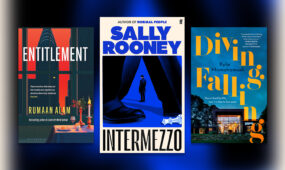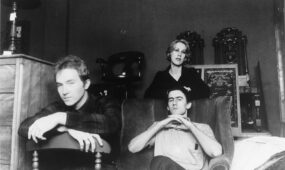Helen Garner's House of Grief
Books & Poetry

Helen Garner’s story of the murder trial of a Victorian father who drove his three young sons into a dam is haunting.
There is imagery that, once imprinted in the mind, cannot be erased; it screams its way up from the subconscious at unexpected times and places.
There are distressing questions that simply defy explanation.
Equally unsettling is the fact that the accused is no horned devil, but rather a simple “everyman”. Thus the story begins:
“Once there was a hard-working bloke who lived in a small Victorian country town with his wife and their three young sons …”
That bloke, Robert Farquharson, drove a car containing his boys – aged two, seven and 10 – into a dam on Father’s Day 2005 while taking them home to their mother, from whom he was separated. All three boys drowned.
Garner – whose previous book, Joe Cinque’s Consolation, was based on a murder trial in Canberra – was drawn into the case from the moment she heard about the tragedy on the television news. Like most people, she desperately hoped it was an accident.
But then Farquharson was committed to stand trial on three charges of murder – and thus began an odyssey that would see the author following the lengthy legal process from the initial hearing at the Supreme Court of Victoria in 2007, through to Farquharson’s final appeal in 2013.
Farquharson’s key defence was that he had suffered cough syncope, a rare condition which caused him to cough so hard he lost consciousness while driving, causing his Holden Commodore to career off the Princess Highway and into a damn between Winchelsea and Geelong. The prosecution argued that the crash was, in fact, a deliberate act of revenge following his split from his ex-wife and the boys’ mother, Cindy Gambino. Crucial factors in the case included wheel marks on the road, and the fact that when Farquharson flagged down help, he wanted to be taken straight to Gambino, rather than trying to get to the boys.
Garner takes her readers to the heart of the courtroom – revealing the weeks of heart-wrenching testimony, aggressive cross-examination and often mind-numbingly boring expert evidence that makes up a criminal case.
Even more compellingly, she takes us to the heart of humanity, with emotional prose that paints a much more complex and empathetic picture of the characters involved than that conveyed in most newspaper stories or television reports. The author is not a cynical veteran court reporter and makes little pretence of objectivity; she admits to often feeling conflicted, uncomfortable or overwhelmed.
Questioning whether there could be “a form of madness called court fatigue”, she writes of the “crazy magical thinking” that plagues her:
“If only Farquharson could be found not guilty, then the boys would not be dead. Cindy would drive home from the court and find them playing kick-to-kick in the yard, or sprawled in their socks on the couch, absorbed in the cartoon channel. Bailey would run to her with his arms out. They would call for something to eat. She would open the fridge and cheerfully start rattling the pots and pans. I could not wait to get home, to haul my grandsons away from their Lego and their light sabres, to squeeze them in my arms until they squirmed. Young boys! How can such wild, vital creatures die? How can this hilarious sweetness be snuffed out forever.”
There is a conversational tone to the narrative, but no detail escapes Garner – not a single tear rolling down the cheek of Cindy Gambino, nor the expressions washing over the faces in the gallery; not the agitation and frustration in the language of the prosecutor and defence counsel, nor the fidgeting of the exhausted members of the jury. Every gesture, expression or sound is captured and amplified to the point that the reader imagines they are there with her in the courtroom.

Get InReview in your inbox – free each Saturday. Local arts and culture – covered.
Thanks for signing up to the InReview newsletter.
Towards the end of This House of Grief, I found myself wishing that a single piece of incontrovertible evidence, such as you might expect in a work of fiction, would suddenly materialise. “Beyond reasonable doubt”, in a case without independent witnesses, is not a simple concept.
The search for justice in the real world is a messy, agonising, drawn-out and often flawed affair – truth can be elusive, motives muddled, witnesses fallible, evidence ambiguous. Garner captures the drama and agony of it all in an intensely personal way in This House of Grief. It’s a compelling but disturbing book.
Support local arts journalism
Your support will help us continue the important work of InReview in publishing free professional journalism that celebrates, interrogates and amplifies arts and culture in South Australia.
Donate Here






Comments
Show comments Hide comments